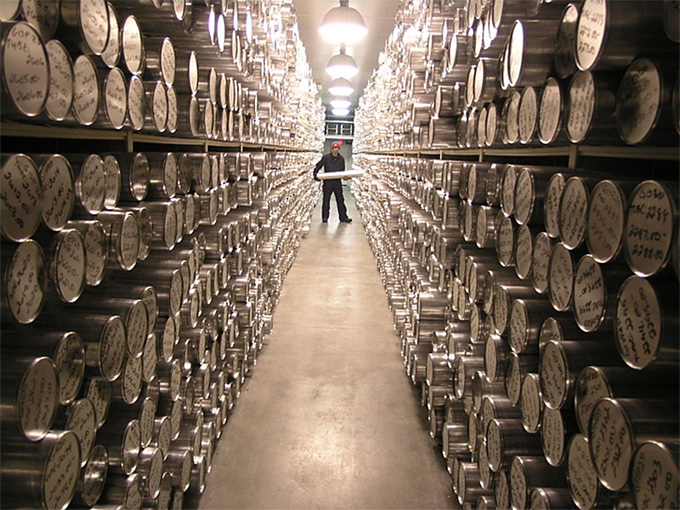
Credit: Made available by Eric Cravens, Assistant Curator, National Ice Core Lab. Public domain, via Wikimedia Commons.
The ice sheets that cover Antarctica and Greenland were once thought to be sterile, inhospitable places. But recently, scientists have discovered they hold vast populations of life.
There were times in Earth’s history when there was no polar ice at all. And many times, like today, when ice sheets formed at the poles.
In the Antarctic today, ice sheets cover 5 million square miles with over a mile of ice that’s up to 1 million years old. In subglacial polar lakes, this life may not have seen the light of day for 20 million years.
This enormous quantity of ice has been shown to harbor microbes in huge numbers. Scientists estimate their total organic carbon biomass would be about ten times that of all humans on Earth.
And, perhaps not so surprisingly, with ice this old, the bacteria are ancient, too.
Viable species hundreds of thousands of years old have been discovered in ice, frozen there all that time in a sort of suspended animation.
But once liberated and revived in labs, some started to replicate as normal.
With them are previously unknown viruses, and certainly new microbes that are yet to be discovered.
And this has scientists both concerned and excited. With continued polar ice melt, some of these microbes could bring ancient diseases…while some could bring new cures for existing ones.
Of course, this has prompted research; and we’ll look into that in a future EarthDate.
Background
Synopsis: Glaciers come in all sizes, from individual mountain glaciers, to ice caps on mountaintops, to vast ice sheets. Ice sheets form over centuries or millennia and persist for many thousands of years. Today, Earth has two great ice sheets, one in Antarctica and one in Greenland—and ancient microbes are in suspended animation within the ice.
- The Greenland ice sheet is only about one-eighth of the extent of the Antarctic ice sheet.
- It covers more than 650,000 sq miles and can be more than 10,000 ft thick.
- Snow accumulation in Greenland is more than twice as much as in Antarctica, but melting occurs over a larger proportion of the ice sheet in Greenland, and the sea breaks up Greenland’s ice shelves more rapidly.
- If Greenland did not have its ice, it would be a chain of small islands.
- Scientists have recently discovered that the ice in Greenland accumulated in three distinct events over more than 130,000 years.
- The Antarctic ice sheet is the largest mass of ice on Earth.
- It covers almost five and a half million sq miles and averages 6,500 ft thick.
- Its greatest measured thickness is more than 15,650 ft.
- The oldest ice recovered in Antarctica is more than 1 million years old.
- Some big lakes have been ice-covered for more than 20 million years.
- The Antarctic ice sheet contains more than 7 million cubic miles of water; if it melted, it would cause a sea-level rise of nearly 200 ft.
- The great weight of the ice has depressed the land surface of East Antarctica to more than a mile and a half below sea level. Without its ice, Antarctica would only be about one-fourth of its current size.
- Although you might think the ice would be too harsh an environment to support any life, scientists have discovered a huge variety of microorganisms in the ancient ice.
- The biomass of the microbial life has been estimated at more than 1,000 times that of all humans on Earth today.
- Many of these microbes have been isolated for more than 750,000 years, since the middle Pleistocene.
- This time capsule preserves genetic information about prehistoric life.
- Some previously extinct microbes liberated from the ice and revived in laboratories have been able to reproduce.
- As climate warms and ice melts, floods of these ancient microorganisms into the sea could compete with modern microbes to upset the balance of marine ecosystems.
- Another concern would be freeing up nutrients, causing microbial and algal blooms that would consume much of the oxygen in the water, creating dead zones and destroying fish habitats.
- Thawing glaciers could release carbon into the atmosphere as the large biomass in the ice decays. Melting of permafrost, or frozen soil, will also expose previously isolated carbon to the atmosphere.

